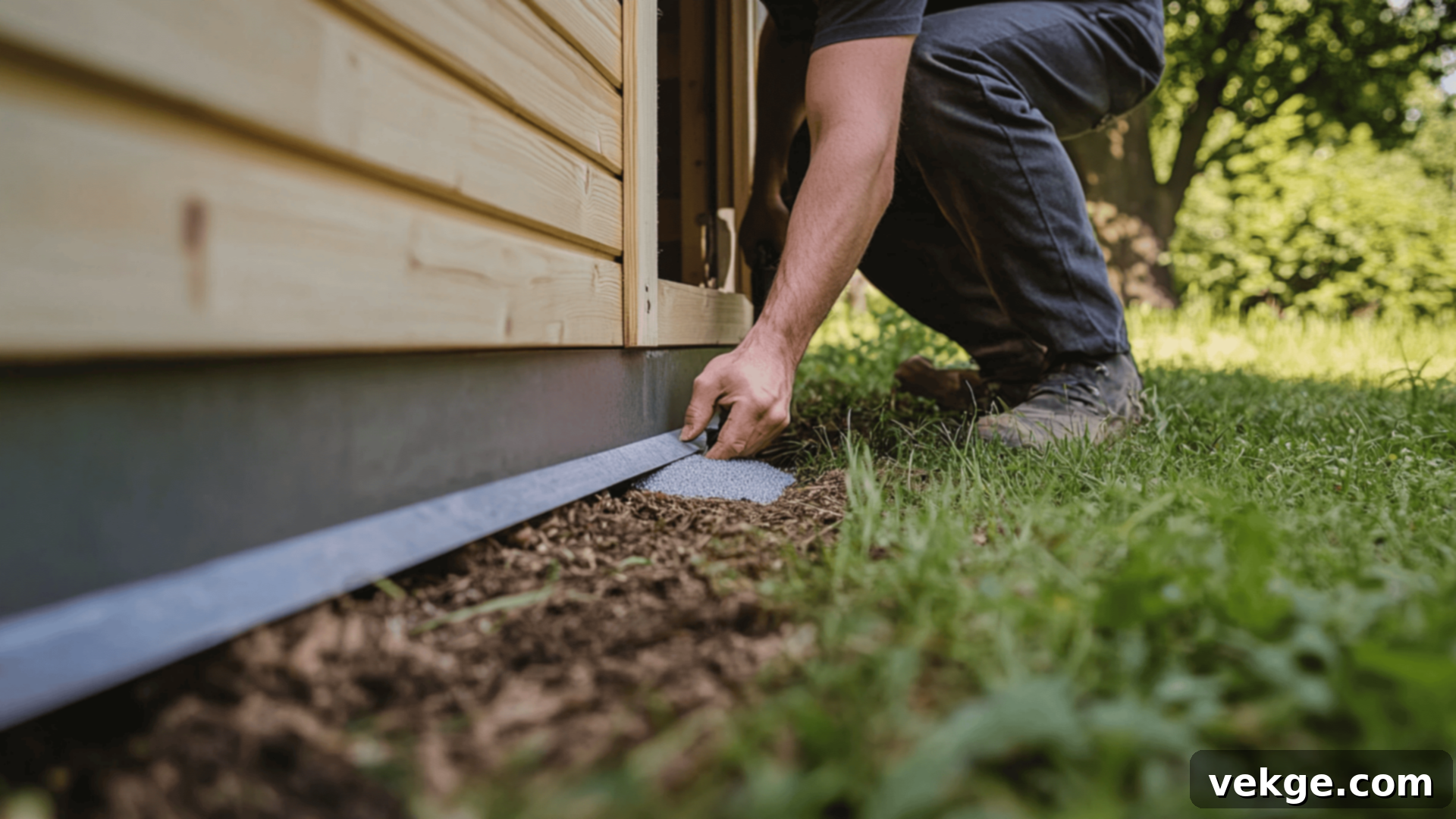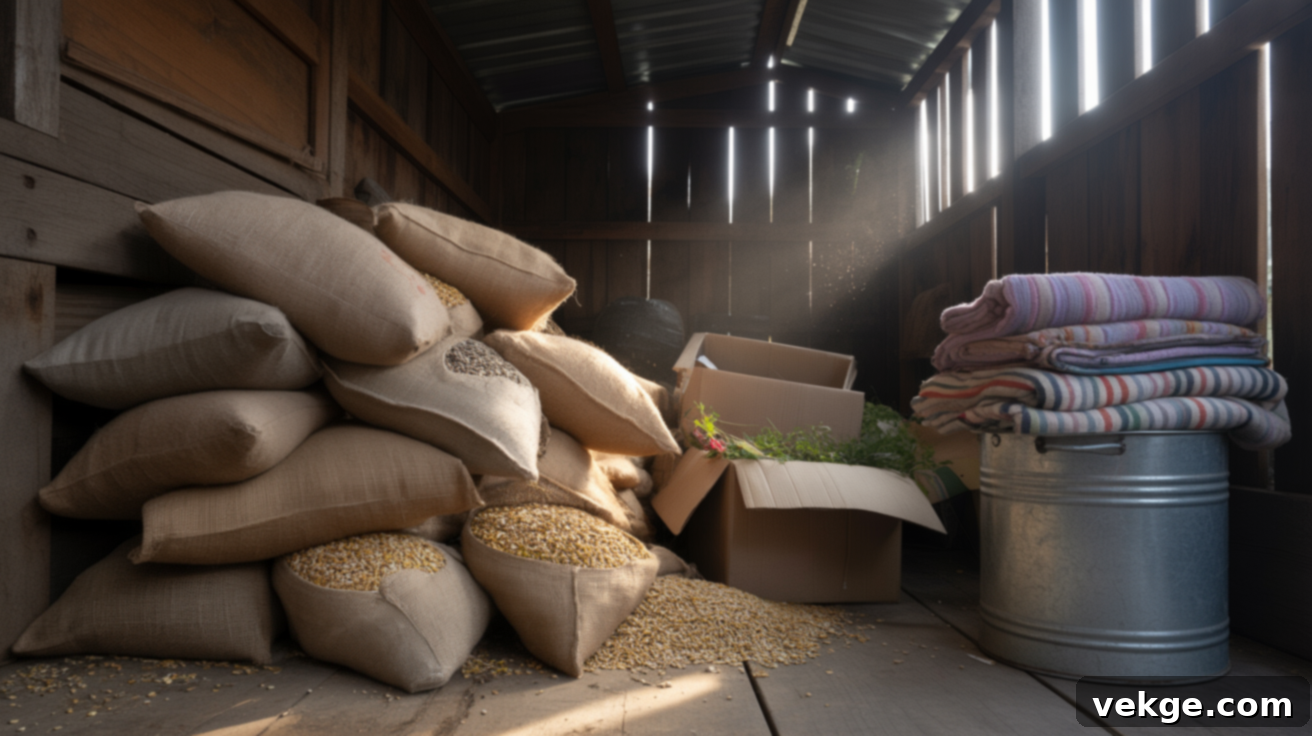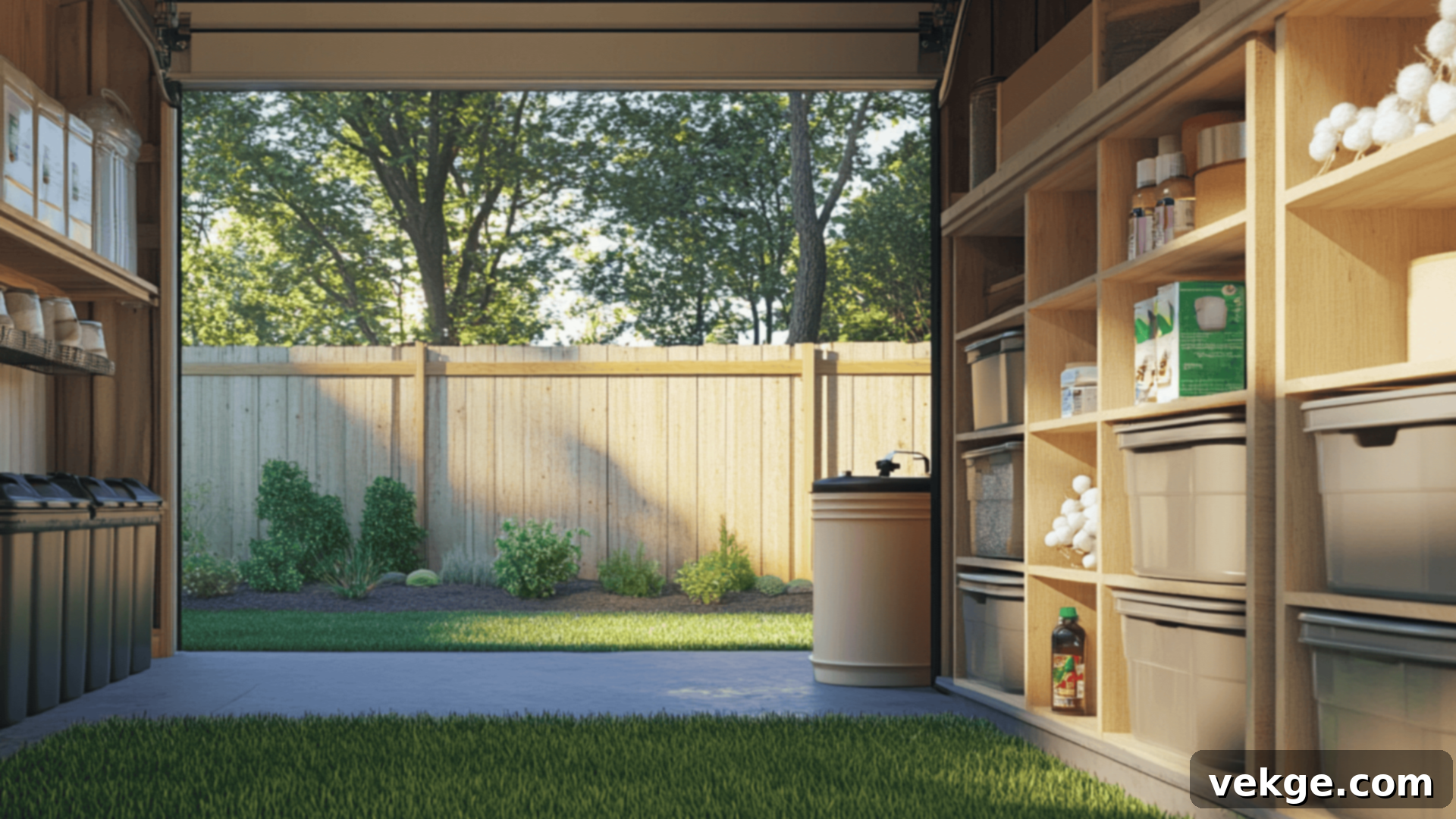Mouse-Proof Your Shed: The Complete Guide to Keeping Rodents Out for Good
There’s nothing quite as frustrating as opening your shed door only to discover tiny droppings, gnawed boxes, or shredded paper in the corners. This unwelcome sight often signals the presence of mice, seeking shelter and potentially damaging your stored items. Last fall, I faced this exact problem, and it prompted me to find a lasting solution to keep these persistent pests from making my shed their home.
In this in-depth guide, I’ll share practical, real-world strategies and simple, effective fixes for how to keep mice out of your shed. Drawing from hands-on experience, you’ll learn how to inspect for common entry points, seal gaps effectively, use safe and natural repellents, organize your shed to eliminate attractions, and set traps the right way. This comprehensive approach is designed to be easy to follow and highly actionable, ensuring your shed remains a rodent-free zone.
Why Mice Target Sheds: Understanding Rodent Attraction
Mice are constantly on the lookout for safe, sheltered places, especially when the weather turns cold or food sources become scarce. Sheds, often undisturbed and filled with potential nesting materials, present an ideal haven. They offer warmth, quiet, and robust shelter from rain, wind, and predators, making them far more appealing than the exposed outdoors.
Beyond basic shelter, several factors make your shed a prime target:
- Food Sources: If your shed contains birdseed, pet food, livestock feed, grass seed, garden produce, or even accessible trash, it becomes an irresistible buffet. Mice have an excellent sense of smell and will quickly locate any available food.
- Nesting Materials: Soft items like old rags, cardboard boxes, newspapers, insulation, or even piles of leaves and sawdust provide perfect material for building cozy nests.
- Easy Access: Mice are incredibly agile and can squeeze through astonishingly small openings – often as tiny as a dime-sized crack or gap. Even a slight imperfection in your shed’s structure can be an open invitation.
You might suspect a mouse problem if you observe small, rice-grain-sized droppings, chew marks on boxes, wiring, or wooden structures, or see shredded materials in secluded corners. Since mice are nocturnal, listen for scratching, gnawing, or rustling sounds, particularly at night. Spotting even a single mouse is usually a strong indicator of a larger population, as they breed rapidly. Acting quickly is crucial to prevent a small issue from escalating into a full-blown infestation.
The Best Way to Mouse-Proof a Shed: A Multi-Step Prevention Plan

Achieving long-term mouse prevention requires more than a single solution; it demands a proactive, multi-step plan. Let’s explore the methods that truly deliver lasting results.
Inspect Your Shed for Mouse Entry Points: The First Line of Defense
The foundation of effective mouse-proofing is a thorough inspection. Start by examining every inch of your shed, paying close attention to areas where mice commonly gain entry. These include low baseboards, roof edges, door frames, window sills, and all corners. Use a bright flashlight to inspect dark recesses and look for any holes, cracks, or even slight warping in the wood or foundation that could create an opening. Remember, if a pencil can fit, a mouse can too!
Don’t overlook potential entry points such as:
- Gaps around utility pipes, wires, or vents.
- Cracks in the concrete foundation or where the shed meets the soil.
- Damaged screens on windows or vents.
- Loose siding or warped panels.
Make a detailed list of every area that requires repair. Early detection and immediate action are vital to preventing a larger problem down the line.
Seal Gaps to Keep Mice Out: Effectively Blocking Access
Once you’ve identified all potential entry points, sealing them immediately is the next critical step. Mice are persistent chewers, so your sealing materials must be robust.
- For Small Cracks and Joints: Use a high-quality, weather-resistant caulk (silicone or acrylic latex) for tight cracks, seams, and gaps around window frames and door trims. Ensure a complete seal.
- For Larger Holes: Do not just caulk these! First, firmly stuff the holes with steel wool. Mice detest chewing through steel wool because it irritates their mouths and is impossible to gnaw through. Once the steel wool is in place, seal over it with caulk, expanding foam (only with steel wool inside), or a patch of wood/metal for a durable barrier.
- For Vents and Larger Openings: Install sturdy wire mesh (hardware cloth) with a small gauge (1/4 inch or less). This allows for proper airflow while creating an impenetrable barrier against rodents and other pests. Ensure the mesh is securely fastened.
- Foundation Gaps: For cracks in concrete foundations, use concrete caulk or mortar to seal them permanently.
Avoid using soft materials like regular foam insulation alone, as mice can easily chew right through it, often creating a new, larger opening.
Weatherproof Shed Doors to Block Mice and Other Pests
A tightly sealed door is just as important as sealing static holes. Even a small gap at the bottom or sides of your door can be a highway for mice. Check your doorframe and threshold for any visible gaps – if light can pass through, so can a mouse.
- Door Sweeps: Install or replace door sweeps on the bottom edge of your shed door. Opt for heavy-duty brush seals or rubber sweeps that create a snug, continuous seal against the threshold. Ensure it’s low enough to block entry but high enough not to impede door operation.
- Threshold Seals: For uneven concrete thresholds, consider installing a rubber threshold seal that the door can press against.
- Weatherstripping: Apply adhesive weatherstripping along the sides and top of the door frame. This helps seal minor gaps and also improves energy efficiency.
- Window Sealing: Ensure all windows shut completely and latch securely. Seal any gaps around window frames with caulk or fresh weatherstripping. If windows do not open, consider permanently sealing them for maximum protection.
Regular wear and tear can loosen seals and create new gaps, so make it a habit to inspect your shed doors and windows at least once a season, especially before colder weather sets in.
Stop Attracting Mice: Food, Clutter, and Moisture Fixes

Beyond blocking entry, eliminating what attracts mice in the first place is crucial. By removing accessible food, soft nesting materials, and moisture sources, you make your shed an unappealing place for rodents to settle and thrive.
Store Pet and Bird Food in Sealed Containers: Denying Rodent Access
Mice possess incredibly sharp teeth and can easily chew through flimsy bags, cardboard boxes, and even thin plastic containers in a matter of minutes. Any food source left exposed is an open invitation. Always store pet food, birdseed, livestock feed, grass seed, or any other consumable items in containers made of thick plastic, metal, or glass with tight-fitting, locking lids. Metal bins are particularly effective as they are virtually impossible for mice to chew through.
Key storage tips:
- Avoid leaving scoops, measuring cups, or open bags of food out overnight.
- Even a few spilled pellets or crumbs can attract mice; clean up any spills immediately.
- If possible, store food containers off the ground on sturdy shelves and away from walls to make them less accessible.
- Regularly check containers for any chew marks or damage, and replace them if compromised.
Keeping food out of reach and inaccessible is one of the most effective ways to prevent mice from establishing a presence in your shed.
Remove Rags, Paper, and Clutter: Eliminating Nesting Sites
Mice instinctively seek out soft, shredded materials to build their nests for warmth and safety. Old rags, newspapers, cardboard boxes, insulation scraps, gardening debris, and even dusty old clothes make perfect nesting supplies. A cluttered shed provides ample hiding spots and abundant nesting materials, making it highly attractive to rodents.
To deter mice:
- Go through your shed’s shelves, corners, and floor space. Dispose of anything soft, loose, unused, or easily shredded.
- If you must store certain items like seasonal fabrics or old linens, place them in airtight, hard plastic bins or vacuum storage bags.
- Organize your shed by installing shelving units and using clear, sealable plastic containers for smaller items. This not only removes nesting opportunities but also makes it much easier to spot any signs of mouse activity.
- Regularly sweep up sawdust, fallen leaves, spiderwebs, and any other debris. A clean, organized shed offers fewer hiding spots and fewer reasons for mice to stay.
Clean Up Crumbs, Spills, and Moisture Sources
Like all living creatures, mice need both food and water to survive. Even tiny crumbs, spilled seeds, or a lingering drink residue can be enough to sustain them. Therefore, a clean shed is a less appealing shed.
- Food Residue: Wipe up any spilled seeds, dirt, crumbs, or liquid residues immediately. If you work on projects in your shed, clean up thoroughly afterward.
- Moisture Control: Be vigilant about moisture sources. Leaky roofs, dripping pipes, condensation on windows, or even damp flooring can create a critical water supply for mice. Address any leaks promptly. Use absorbent mats or trays under containers that might leak liquids.
- Ventilation: Ensure good ventilation in your shed to prevent condensation and keep the interior dry.
A dry, crumb-free, and tidy shed sends a clear message to mice: this is not a suitable place to live or find sustenance.
Repel Mice with Safe, Strong Scents: Natural Deterrents
Mice rely heavily on their sense of smell, and certain strong odors can disorient them and make your shed feel unwelcoming. Using everyday oils and household ingredients offers a safe, chemical-free way to deter mice.
DIY Mouse Repellent: Peppermint Spray
Peppermint oil is one of the most widely recommended natural deterrents for mice. Its intense, pungent aroma overpowers their keen sense of smell, making it difficult for them to locate food sources, navigate, or feel secure in the area. This olfactory confusion encourages them to seek shelter elsewhere.
To create an effective peppermint spray:
- Ingredients: Mix 2 teaspoons of pure peppermint essential oil with 1 cup of water and a few drops of dish soap (the soap helps the oil mix with water).
- Application: Shake the mixture well before each use. Spray it generously around shed doors, windows, corners, along baseboards, and any known or suspected entry points. You can also soak cotton balls in undiluted peppermint oil and place them in strategic locations where mice might hide or enter.
- Reapplication: The scent of peppermint oil fades over time, especially in outdoor environments or after rain. Reapply the spray or replace cotton balls every few days, or at least weekly, for continuous effectiveness.
For convenience, you can also purchase ready-made peppermint-based rodent repellents:
1. Mighty Mint Peppermint Oil Rodent Repellent Spray
2. Harris Peppermint Oil Mice & Rodent Repellent Spray
Other Scents Mice Avoid (Cedar, Vinegar, Cinnamon)
Beyond peppermint, several other strong, natural scents can help deter mice:
- Cedar Oil/Shavings: Cedar has a distinct aroma that many pests, including mice, dislike. Cedar oil can be diffused or applied to cotton balls. Cedar shavings can be placed in sachets around the shed, particularly useful in closets or storage areas. It also has the added benefit of deterring some insects.
- Vinegar: White vinegar has a sharp, acidic smell that can repel mice. While effective immediately, its scent dissipates very quickly, requiring frequent reapplication. You can spray undiluted white vinegar or place small bowls of it in affected areas.
- Cinnamon: Both cinnamon essential oil and powdered cinnamon can be used. Sprinkle cinnamon powder around the edges of your shed, near entry points, or on shelves. Cinnamon sticks or oil-soaked cotton balls also work. Like other scents, consistency is key for cinnamon to be effective.
These natural scents are generally safe for pets and children when used properly, but their effectiveness relies on consistent reapplication. For better results, especially in sheds located near wooded areas or open fields, consider combining two or more of these scents to create a more powerful deterrent.
Mouse Repellents: What Works and What Doesn’t
While many home remedies and commercial products promise quick fixes, some methods prove to be less effective or even problematic in the long run. It’s important to approach these with caution and always prioritize proven prevention strategies.
Mothballs, Dryer Sheets, and Soap: Fact or Myth?
Many anecdotal accounts suggest that mothballs, dryer sheets, or strong-smelling soaps (like Irish Spring) can keep mice away. The reasoning is that their strong odors are unpleasant to rodents.
- Mothballs: While mothballs contain chemicals (naphthalene or paradichlorobenzene) that are indeed pungent, most pest control experts agree their effect on mice is short-lived and unreliable. More importantly, mothballs are toxic to pets and children if ingested, and their fumes can be harmful in enclosed spaces. They are not recommended as a safe or effective mouse repellent.
- Dryer Sheets and Soap: These items do emit strong scents. However, mice are incredibly adaptable. They may initially avoid the smell but often become accustomed to it over time, especially if there’s an attractive food source nearby. Their repellent effect is temporary at best and not scientifically proven to deter mice long-term.
If you choose to use any of these, do so with extreme caution and never rely on them as your primary defense. True prevention stems from physically sealing entry points and maintaining a clean, clutter-free environment.
Ultrasonic Devices and Their Limitations in Sheds
Ultrasonic pest repellers claim to drive mice away by emitting high-frequency sound waves that are imperceptible to humans. In theory, these sounds create an uncomfortable environment for rodents, forcing them to leave.
While some users report short-term success, particularly in small, unobstructed spaces like sheds, these devices have significant limitations:
- Acclimation: Mice often become accustomed to the ultrasonic sounds over time, rendering the effect temporary. They learn to ignore the noise.
- Signal Obstruction: Ultrasonic waves do not penetrate solid objects like walls, furniture, or stored items. This means their effective range is severely limited, creating “dead spots” where mice can still thrive.
- Not a Solution for Infestations: Ultrasonic devices are best used as a preventative measure to deter *new* mice from entering, rather than a solution for an existing infestation. They are a backup, not a main solution.
If you decide to try an ultrasonic device, use it as a supplementary tool alongside robust sealing, sanitation, and trapping methods. Do not expect it to be a standalone fix for a significant mouse problem.
How to Set Mouse Traps the Right Way: For Effective Rodent Control

When prevention methods aren’t enough, or if you’re dealing with an active infestation, traps can be highly effective. The key to success lies in choosing the right type of trap, baiting it correctly, and placing it strategically.
Snap, Glue, and Humane Traps: Choosing the Best Option
Various trap types are available, each with its own advantages and considerations:
- Snap Traps: These are classic, inexpensive, and designed to kill mice instantly upon activation. They are highly effective. Bait with a small dab of peanut butter, chocolate, hazelnut spread, or even a tiny piece of an oat. Place them carefully to avoid accidental injury to pets or children.
- Glue Traps: These traps use a sticky surface to ensnare mice alive. While effective, they can be considered less humane as mice may suffer for an extended period. If you use glue traps, check them frequently and dispatch caught mice quickly and humanely. They are not recommended if you’re sensitive to this aspect.
- Humane/Live Traps: These traps capture mice without harming them, allowing for live release. You must check them often and release the mice several miles away from your property (at least 2-3 miles) to prevent them from simply returning. Bait them similarly to snap traps.
Always wear gloves when handling traps, especially after catching a mouse, to prevent the spread of scent, diseases, or germs. Combining traps with other prevention methods offers the best long-term results.
If you’re looking for effective traps, here are a couple of reliable options to consider:
1. Victor Mouse Traps M150-12
2. Catchmaster Jumbo Rat & Mouse Glue Traps
Where to Place and How Often to Check Traps
Strategic trap placement is often more crucial than the sheer number of traps used. Mice tend to travel along walls and in secluded areas, using these edges for guidance and security. They rarely venture into open spaces.
- Placement: Set traps parallel to walls, behind stored items, inside dark corners, and near any observed signs of activity (droppings, gnaw marks, or suspected entry points). For larger infestations, place traps every few feet along these routes.
- Baiting: Use only a pea-sized amount of bait to ensure the mouse has to pull on the trigger, increasing the trap’s effectiveness.
- Frequency of Checks: Check traps at least once, preferably twice, a day. Leaving traps unchecked can lead to unpleasant odors, unhygienic conditions, and unnecessary suffering for trapped animals. Promptly reset or replace traps as needed.
Repellent Comparison Table: Evaluating Different Deterrent Options
Understanding the strengths and weaknesses of various repellents can help you make informed choices for your shed. This table provides a quick comparison of popular natural and commercial options.
| Repellent Type | Effectiveness | Safety for Pets/Kids | Longevity | Notes |
|---|---|---|---|---|
| Peppermint Oil Spray | Moderate | Safe (when diluted/applied carefully) | Short | Requires frequent reapplication; may deter mice temporarily by disorienting their senses. |
| Cedar Oil/Shavings | Moderate | Safe | Moderate | Natural deterrent; also repels other insects; scent fades over time. |
| Vinegar | Low | Safe | Very Short | Strong odor, but evaporates quickly; limited long-term effectiveness. |
| Cinnamon (Oil/Powder) | Low-Moderate | Safe | Short | Pleasant scent; needs regular reapplication to maintain deterrent effect. |
| Mothballs | Low (unreliable) | Not Safe (Toxic) | Moderate | Toxic to pets and children; fumes can be harmful; not recommended for enclosed spaces. |
| Dryer Sheets | Low (anecdotal) | Safe | Very Short | Anecdotal evidence only; not scientifically proven to be an effective deterrent. |
| Ultrasonic Devices | Variable | Safe | Variable | Effectiveness diminishes as mice acclimate; signal blocked by objects; best as a supplement. |
Shed Material Considerations: Wood vs. Metal vs. Plastic and Mouse Resistance
The construction material of your shed significantly influences its inherent vulnerability to mouse infestations. Some materials offer a natural advantage, while others require more diligent maintenance to keep rodents out.
| Material | Mouse Resistance | What to Watch For |
|---|---|---|
| Wood Sheds | Moderate | Prone to warping, cracking, and rot over time, creating easy entry points. Mice can chew through soft spots. Requires consistent sealing and maintenance of all joints and panels. |
| Metal Sheds | Strong | Mice find metal very difficult to chew through. However, watch for loose panels, gaps at the base (especially where it meets the foundation), and areas where rust has created weak spots or holes. |
| Plastic Sheds | Strong | Generally resistant to chewing and rot. Key vulnerabilities include cracks developing in cold weather or due to UV degradation over time. Ensure all seams and foundation connections are tight. |
Regardless of the material, the overarching principle remains: regular inspection and meticulous sealing of all gaps and openings are paramount to successfully keeping mice out of your shed.
Mouse Prevention Habits That Actually Work: For a Rodent-Free Shed
Maintaining a mouse-free shed isn’t a one-time fix; it’s an ongoing commitment to smart habits. Consistent application of these simple strategies throughout the year will make a significant difference:
- Seal Every Gap: Be relentless in closing even the smallest openings. Remember the pencil rule: if it fits, a mouse can squeeze through. Prioritize foundation cracks, utility pipe penetrations, and door/window gaps.
- Choose Durable Sealing Materials: Avoid relying solely on soft foam. For lasting results, always use steel wool or sturdy wire mesh (hardware cloth) for larger holes, then seal over with caulk or patches.
- Conduct Seasonal Inspections: Make it a habit to thoroughly check your shed every season, especially before winter. Look for new holes, gnaw marks, droppings, or signs of nesting.
- Store Food Securely: Use rigid, airtight containers made of thick plastic or metal for all food items, including pet food, birdseed, and garden seeds. Bags and cardboard boxes offer no protection against determined mice.
- Eliminate Clutter: Keep your shed organized and free of soft debris like old rags, newspapers, and cardboard boxes. These provide ideal nesting materials and hiding spots. Utilize shelving and sealed bins.
- Utilize Repellents Strategically: Natural repellents like peppermint oil can be helpful deterrents, but they are not a standalone solution. Use them to supplement physical barriers and good sanitation.
- Manage External Attractants: Keep firewood stacks off the ground and at least 20 feet away from shed walls. Trim overgrown vegetation around the shed’s perimeter, as this provides cover for mice approaching your structure.
- Maintain a Dry Environment: Address any sources of moisture promptly, such as leaks or poor ventilation, as water is essential for mouse survival.
These consistent, small efforts accumulate to create a formidable defense, keeping your shed and its contents safe from unwanted rodent visitors.
Conclusion: Your Path to a Mouse-Free Shed
Keeping mice out of your shed doesn’t have to be an overwhelming battle. My own experience showed me that once you commit to sealing up potential entry points, meticulously clearing out clutter, and consistently applying simple, practical steps, the problem genuinely begins to disappear.
You now possess a comprehensive toolkit to achieve the same results – from intelligent storage solutions and effective sealing techniques to safe, scent-based repellents and proper trapping methods. The key is to stick to these fundamental principles and conduct regular checks of your shed’s defenses.
That small, ongoing bit of effort will pay off immensely, protecting your valuable belongings and providing you with peace of mind. If this guide has helped you in your quest for a rodent-free shed, know that there’s more valuable information where this came from. I encourage you to explore other guides on the website; they are filled with easy, actionable ways to protect your property and stay ahead of common household problems.
